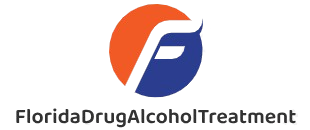Unlocking Affordable Treatment
When faced with the need for medical treatment, the cost can often be a major barrier to accessing the care you need. Whether you’re dealing with a chronic condition, unexpected illness, or routine healthcare, finding affordable treatment options is crucial to maintaining your well-being without breaking the bank. In a world where healthcare costs continue to rise, it’s essential to know how to navigate the system to find the best care at a price you can afford.
Are you looking for ways to save on medical expenses? Do you find yourself wondering if there are more affordable alternatives to the treatments recommended by your healthcare provider? In this comprehensive guide, we will explore various strategies, resources, and tips to help you find affordable treatment options without compromising on quality. Let’s delve into the world of healthcare affordability and empower you to make informed decisions about your health.
The Rising Cost of Healthcare

Healthcare costs have been steadily increasing over the years, placing a significant financial burden on individuals and families. From prescription drugs to hospital stays, the price of medical care can quickly add up, leaving many people struggling to afford the treatment they need. According to a report by the Kaiser Family Foundation, the average annual premium for employer-sponsored health insurance in 2020 was $7,470 for single coverage and $21,342 for family coverage.
With the cost of healthcare continuing to rise faster than inflation, finding affordable treatment options has become more important than ever. But how can you navigate the complex world of healthcare pricing to ensure you’re not paying more than necessary for the care you receive? Let’s explore some strategies that can help you save money on medical expenses.
Insurance Coverage and Negotiation

One of the most common ways to access affordable treatment is through health insurance coverage. If you have health insurance, it’s essential to understand your policy’s benefits, including what treatments and services are covered, what your copayments and deductibles are, and which healthcare providers are in-network.
Before seeking treatment, it’s a good idea to verify your insurance coverage and inquire about any potential out-of-pocket costs. In some cases, you may need to obtain pre-authorization from your insurance company before undergoing certain procedures or treatments. Understanding your insurance coverage can help you avoid unexpected medical bills and ensure that you’re getting the most out of your policy.
If you don’t have health insurance or your policy doesn’t cover the treatment you need, don’t despair. Many healthcare providers offer cash-pay discounts or sliding scale fees for uninsured or underinsured patients. Additionally, you can often negotiate with healthcare providers to lower the cost of your care, especially if you’re paying out of pocket. Don’t be afraid to ask about payment plans, discounts, or other financial assistance options that may be available to you.
Generic Medications and Prescription Assistance Programs

Prescription medications can be a significant expense for many people, especially for those with chronic conditions that require ongoing treatment. One way to save on prescription drugs is by opting for generic medications whenever possible. Generic drugs are bioequivalent to brand-name drugs but typically cost significantly less, making them a more affordable option for many patients.
In addition to choosing generic medications, you may also be able to save money through prescription assistance programs offered by pharmaceutical companies, nonprofit organizations, and government agencies. These programs provide discounts, coupons, and other financial assistance to help you afford the medications you need. Some programs even offer free or low-cost prescription drugs for eligible individuals.
Before filling a prescription, be sure to ask your healthcare provider or pharmacist about any available discounts or assistance programs. You can also research online or contact the drug manufacturer directly to inquire about potential cost-saving options for your medications.
Community Health Centers and Free Clinics

Community health centers and free clinics are valuable resources for individuals who are uninsured or underinsured and in need of affordable medical care. These facilities provide a wide range of services, including primary care, preventive care, dental care, mental health services, and more, often at reduced or no cost to patients.
Community health centers receive federal funding to serve medically underserved populations, including low-income individuals, migrant workers, and residents of rural areas. They offer a sliding fee scale based on income and family size, making it possible for individuals with limited financial resources to access quality healthcare services.
Free clinics, on the other hand, are typically run by volunteer healthcare providers and offer basic medical care to individuals who cannot afford to pay for services. While free clinics may have limited hours or services, they can be a lifeline for those in need of urgent or ongoing medical treatment.
Telemedicine and Remote Consultations
Telemedicine has become an increasingly popular option for accessing affordable healthcare services, especially in light of the COVID-19 pandemic. Telemedicine allows patients to consult with healthcare providers remotely via phone, video, or online chat, eliminating the need for in-person visits and reducing healthcare costs.
Many health insurance plans now cover telemedicine services, making it a convenient and cost-effective option for routine medical consultations, follow-up visits, and non-emergency care. Some telemedicine providers even offer flat-rate pricing or subscription-based plans, allowing patients to access unlimited consultations for a fixed monthly fee.
Telemedicine can be particularly beneficial for individuals who live in rural or underserved areas, have limited mobility, or prefer the convenience of virtual healthcare appointments. By utilizing telemedicine services, you can save time and money while still receiving quality medical care from licensed healthcare providers.
Patient Assistance Programs and Financial Aid
Many hospitals, healthcare providers, and pharmaceutical companies offer patient assistance programs and financial aid to help individuals afford the medical treatment they need. These programs are designed to assist patients who are experiencing financial hardship, lack health insurance, or have high out-of-pocket expenses.
Patient assistance programs may provide free or discounted medications, medical supplies, diagnostic tests, or procedures to eligible individuals. Financial aid programs, on the other hand, can help cover the cost of hospital stays, surgeries, and other medical services that may be beyond your financial means.
To access patient assistance programs and financial aid, you may need to meet certain eligibility criteria, such as income limits, residency requirements, or medical necessity. It’s essential to research available programs in your area and inquire with your healthcare provider about potential financial assistance options that may be available to you.
Health Savings Accounts and Flexible Spending Arrangements
Health savings accounts (HSAs) and flexible spending arrangements (FSAs) are tax-advantaged accounts that can help you save money on medical expenses. HSAs are available to individuals who have a high-deductible health insurance plan and allow you to contribute pre-tax dollars to pay for qualified medical expenses, such as doctor visits, prescription drugs, and medical supplies.
FSAs, on the other hand, are offered by some employers and allow you to set aside pre-tax dollars to cover out-of-pocket medical expenses. While FSAs are subject to a “use it or lose it” rule, meaning you must spend the funds within the plan year or forfeit them, they can still be a valuable tool for saving money on healthcare costs.
By contributing to an HSA or FSA, you can lower your taxable income, reduce your healthcare expenses, and build a financial cushion for future medical needs. These accounts can help you budget for healthcare costs, save money on taxes, and access affordable treatment options when you need them most.
Comparative Pricing and Medical Tourism
Comparative pricing is a valuable tool for finding affordable treatment options and reducing healthcare costs. By comparing prices for medical procedures, treatments, and services across different providers, you can identify cost-effective options and potentially save money on your healthcare expenses.
Many healthcare facilities now offer price transparency tools that allow patients to compare prices for common procedures, such as MRIs, blood tests, and surgeries. By shopping around and choosing the most cost-effective provider, you can avoid overpaying for medical care and ensure that you’re getting the best value for your healthcare dollars.
Medical tourism is another option for accessing affordable treatment, especially for elective procedures or treatments that may be prohibitively expensive in your home country. By traveling to a foreign country with lower healthcare costs, you can save money on medical care while still receiving high-quality treatment from skilled healthcare providers.
Before engaging in medical tourism, it’s essential to research the providers, facilities, and services available in your destination country, as well as any potential risks or complications associated with traveling for medical treatment. By being informed and prepared, you can access affordable healthcare options that meet your needs and budget.
Conclusion
When it comes to finding affordable treatment options, knowledge is power. By understanding your healthcare coverage, exploring cost-saving strategies, and advocating for your financial well-being, you can access the care you need without breaking the bank. From insurance coverage and prescription assistance programs to community health centers and telemedicine services, there are numerous resources available to help you save money on medical expenses and prioritize your health.
Remember, affordable healthcare is not out of reach. With a little research, planning, and advocacy, you can navigate the complex world of healthcare pricing and find the best treatment options at a price you can afford. Don’t let cost be a barrier to your well-being empower yourself to make informed decisions about your health and access the care you deserve.
Whether you’re facing a medical emergency, managing a chronic condition, or seeking routine healthcare services, there are affordable treatment options available to meet your needs. By taking proactive steps to save on medical expenses, you can ensure that your health remains a top priority without sacrificing your financial stability. Your well-being is priceless and with the right resources and strategies, you can access affordable treatment options that support your health and your wallet.




